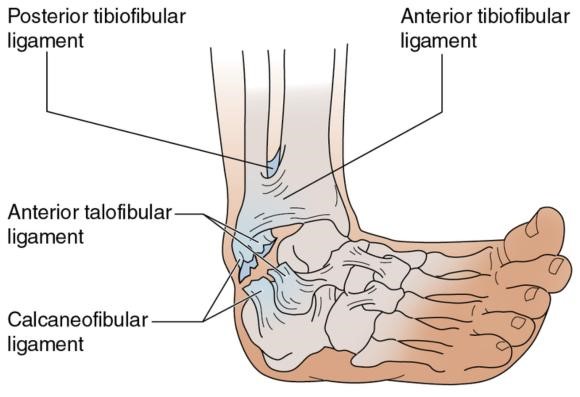Ankle Instability
Ankle sprains are extremely common, with most people likely to experience one in their lifetime. Studies have shown that ankle instability is a common occurrence in older adolescents and adults as a result of recurrent ankle injuries as kids. Of those who sustain an ankle injury, up to 32% of these people will go on to develop residual ankle instability. Ankle instability refers to a patient who frequently experiences their ankle ’giving out’ or has continuous pain and always sprains their ankle.
WHO’S AT RISK?
The sports you play, along with other physical features, can predispose an individual to these injuries. Those at higher risk are:
- Dance performers
- Soccer players
- History of ankle sprains
- Increased BMI (body weight)
- Malalignment of the ankle
- Malalignment of the fibular
- High arched feet
- Decrease ankle dorsiflexion (how much your ankle bends)
COMMON SITE OF INJURY

The most common site of injury is the lateral (outside) ankle ligaments, made up of 3 main ligament structures.
- The Anterior Fibular Ligament (ATFL), Most common site of injury.
- Calcaneofibular ligament (CFL)
- Posterior Talofibular Ligament (PTFL), very rarely injured during a sprain.
DIAGNOSIS
Ankle ligament sprains are graded on basis of severity.
Grade 1: A mild stretching of the ligaments without rupture or joint instability
Grade 2: Is a partial rupture if the ligament with moderate pain and swelling. There are functional limitations and slight to moderate instability. May have problems with weight bearing
Grade 3: A complete ligament rupture with marked pain, swelling, bruising and pain. In grade 3 injuries there is a marked impairment of function with instability.
TREATMENT:
Most grade 1 and 2 injuries can be managed without surgery, and in many cases grade 3 as well. However, Grade 3 injuries may need a period of immobilisation. Surgery will always be a case to case basis.
Evidence shows that early conservative therapies should be performed to decrease pain, swelling, address strength and flexibility, and improve dynamic movement. Initial recommend interventions are:
- RICER (Rest,Ice,Compression,Elevation,Rehabilitation)
- Temporary activity modification
- Ankle bracing
- Ankle taping
- Foot orthoses if required
The above interventions all work to provided additional stability. Physical rehabilitation is the key to rebuild strength, return to normal range of motion, maintain flexibility of the calf muscles and proprioceptive (balance) abilities.
Ankle injuries are a common condition which can be easily assessed and managed with treatment plans tailored to an individual’s needs and goals. Correct treatment will help avoid chronic ankle instability. If you are seeking treatment regarding recurrent sprains or even chronic instability, contact us to make an appointment today.








